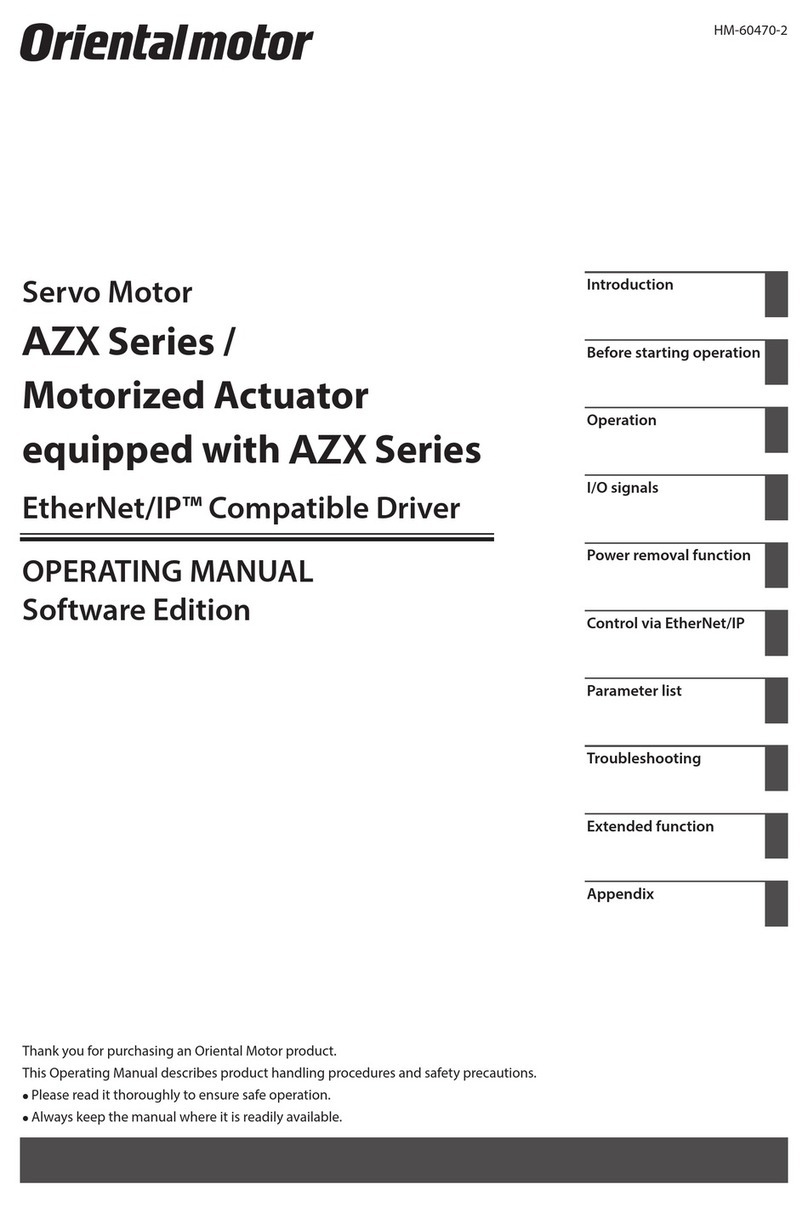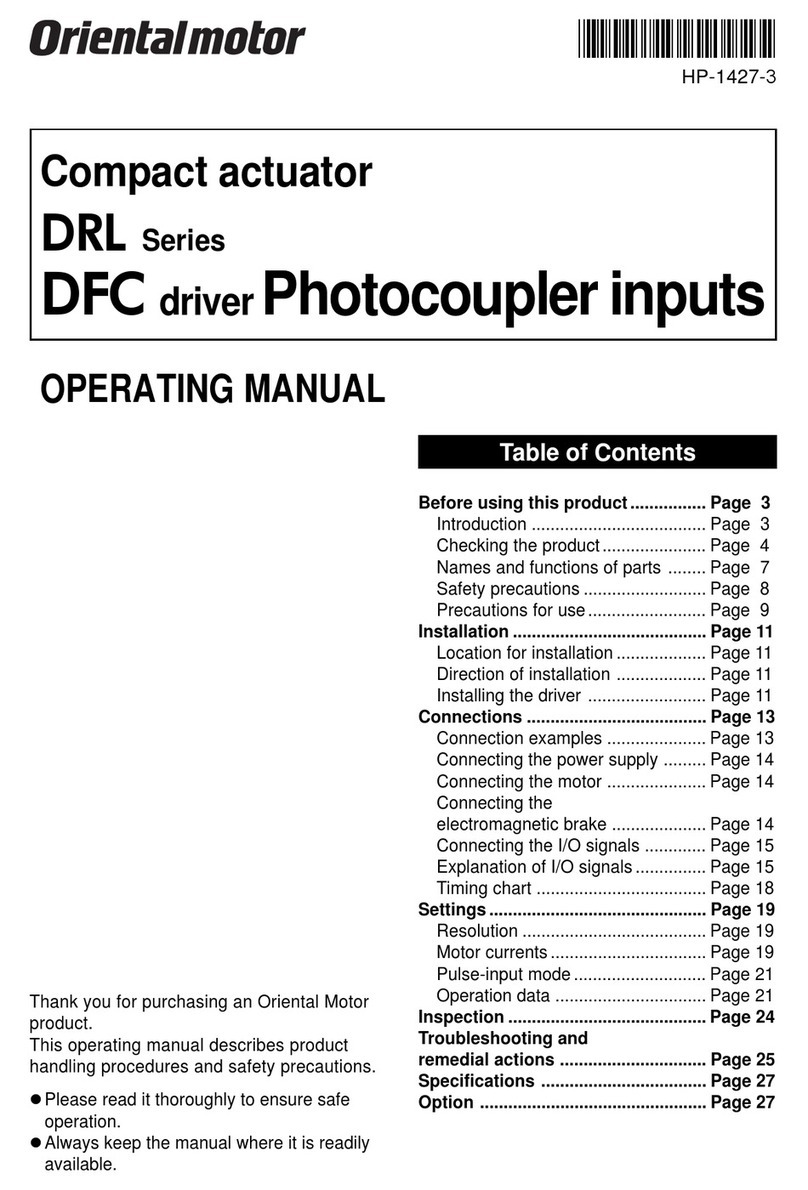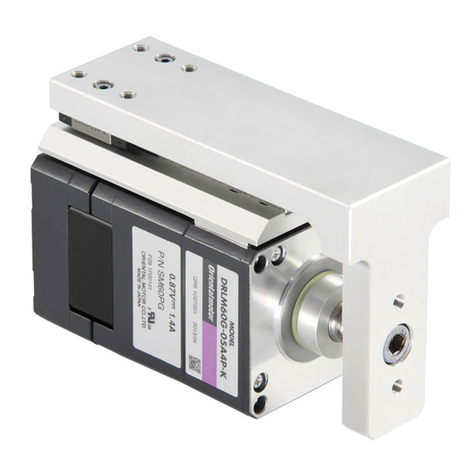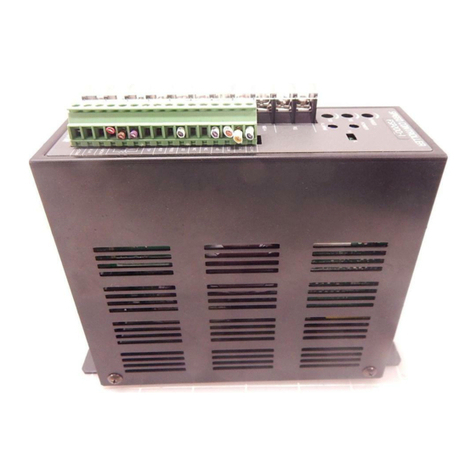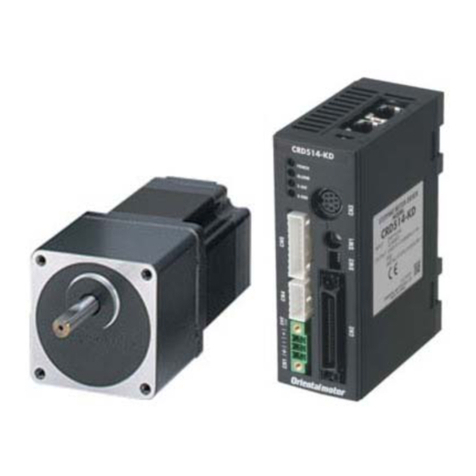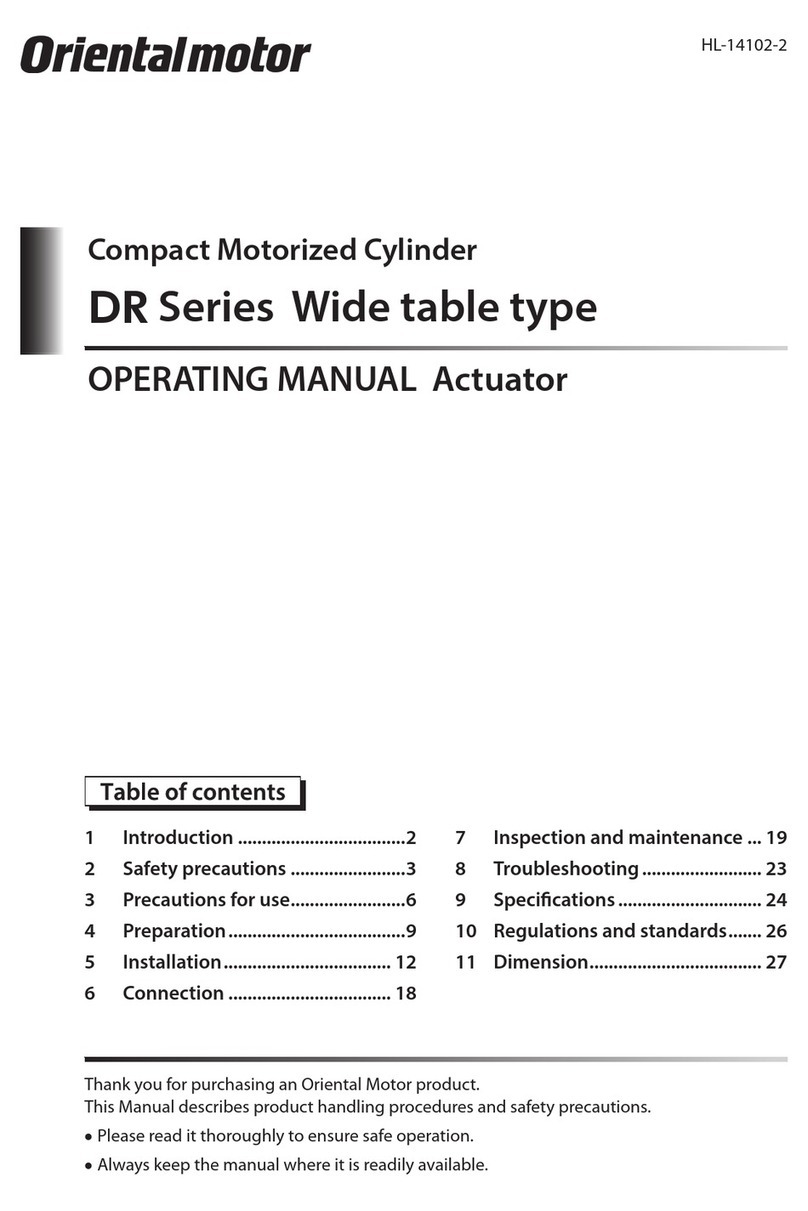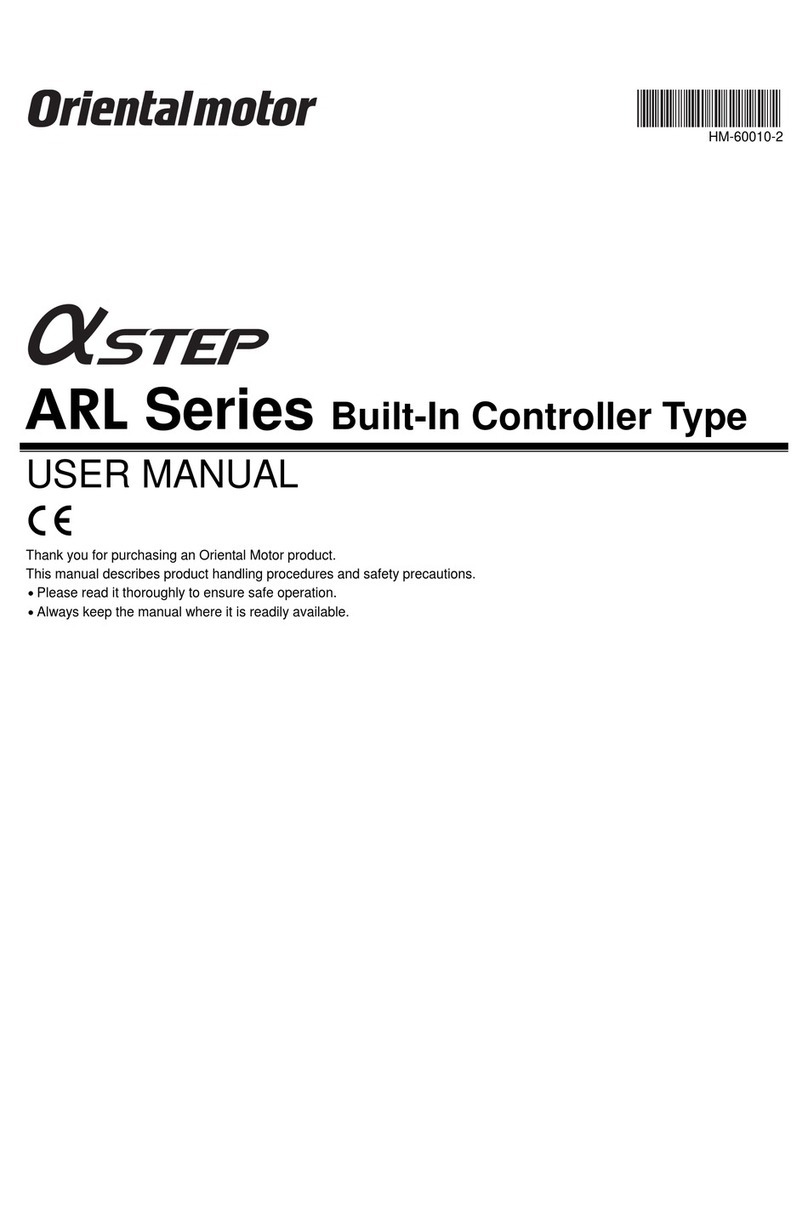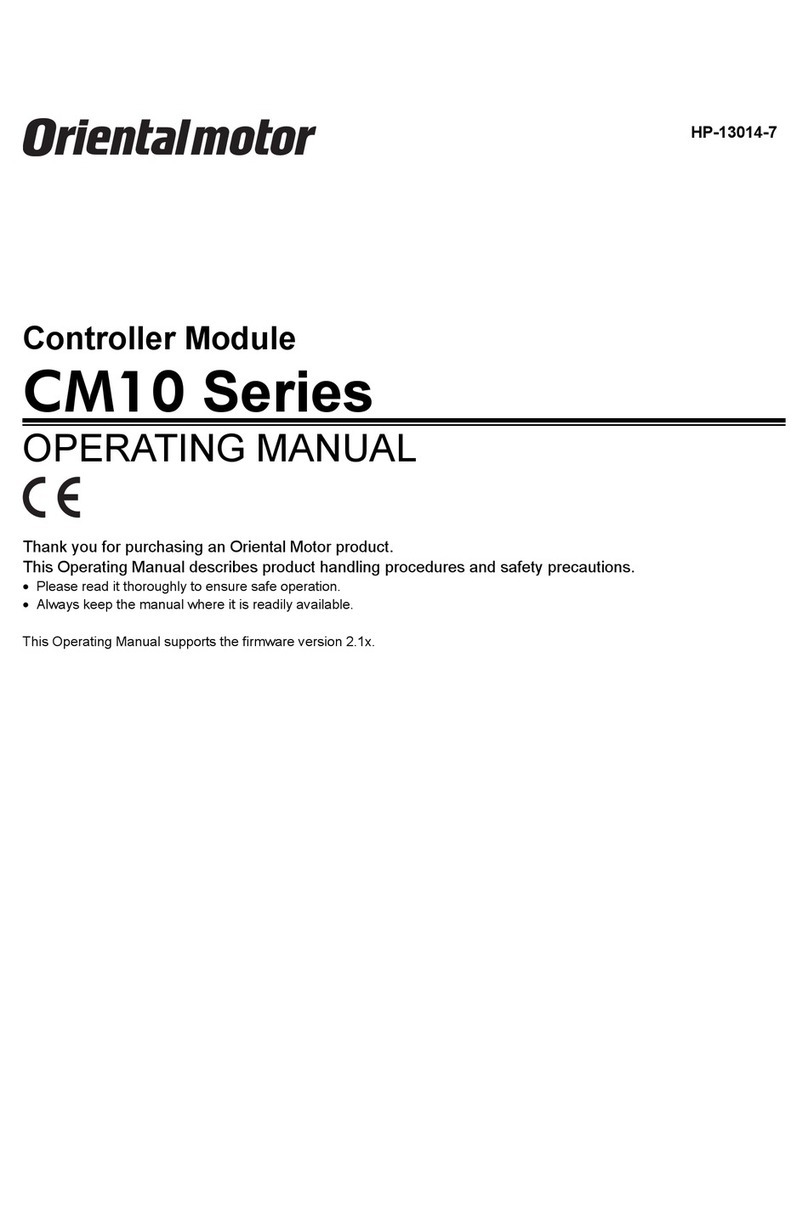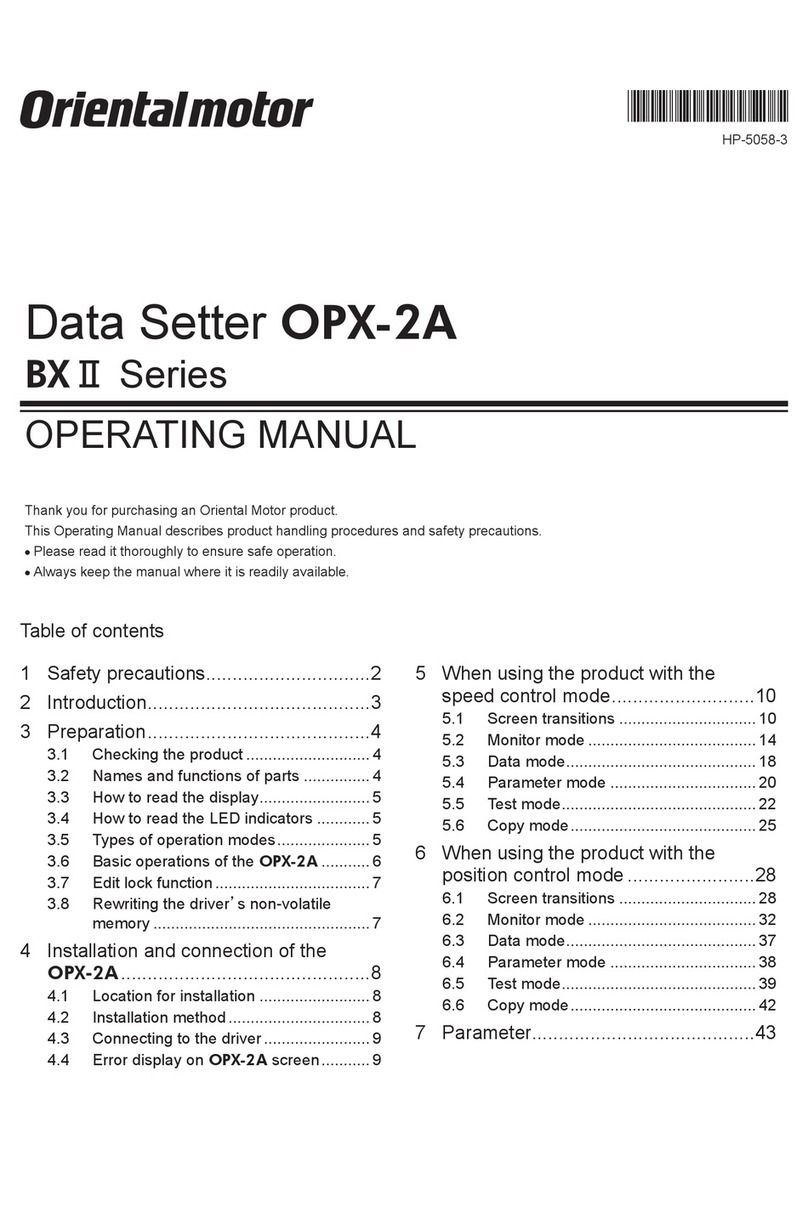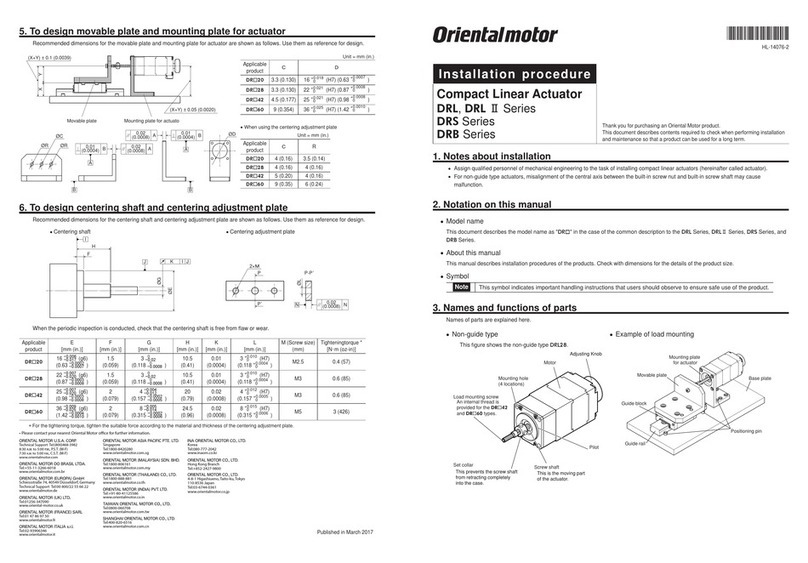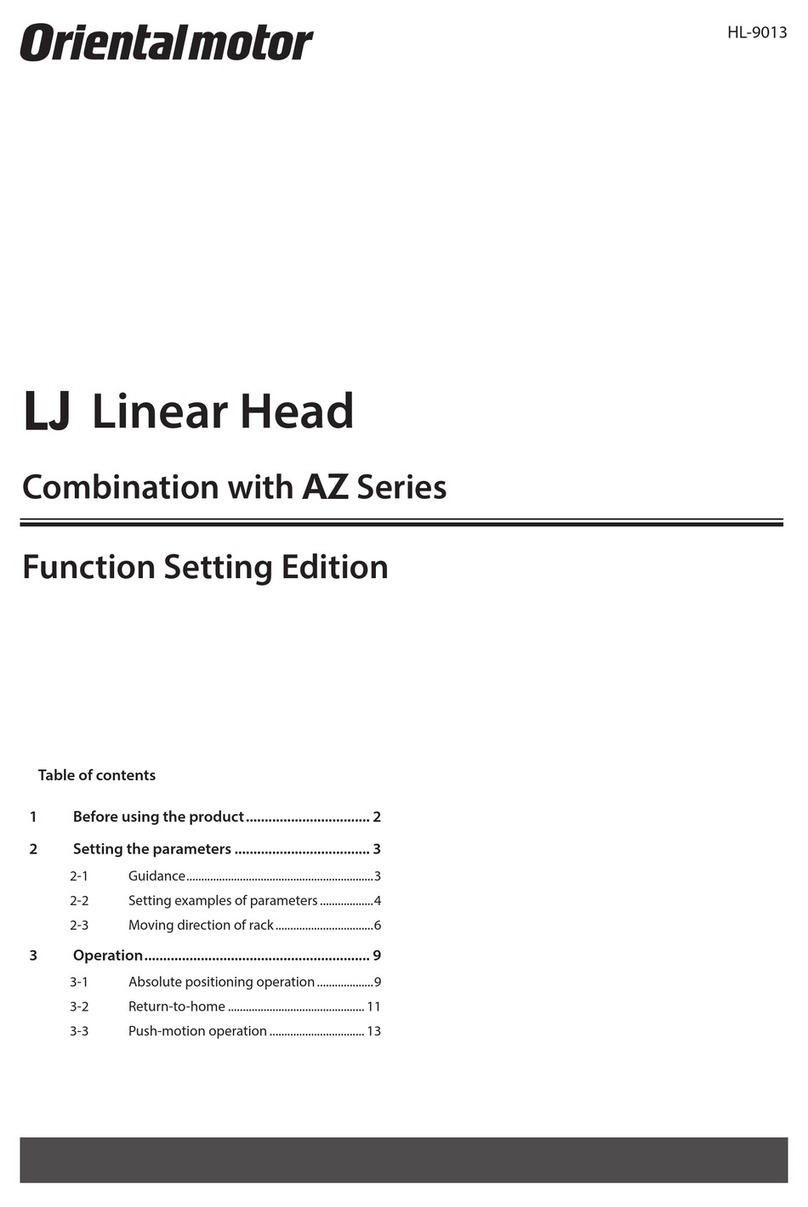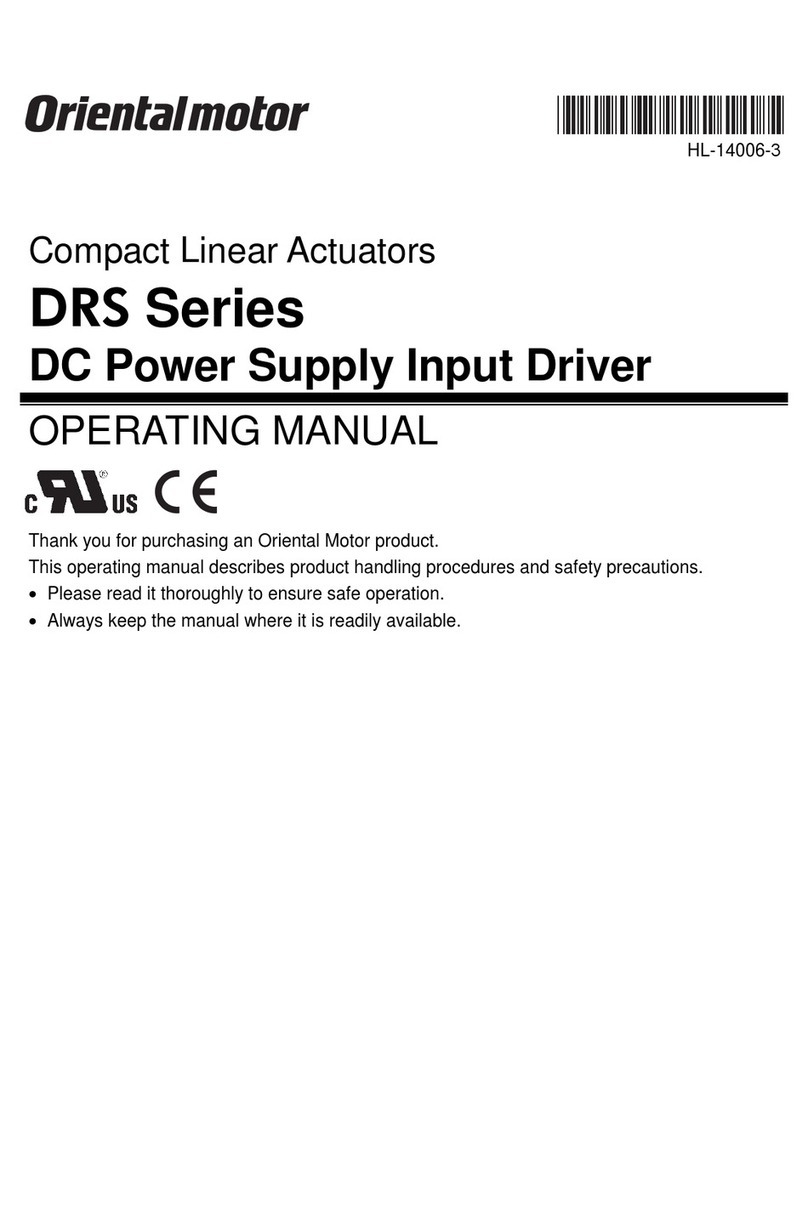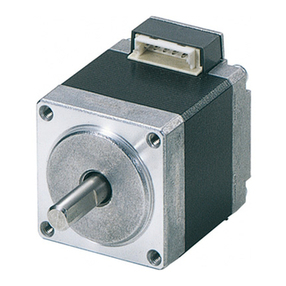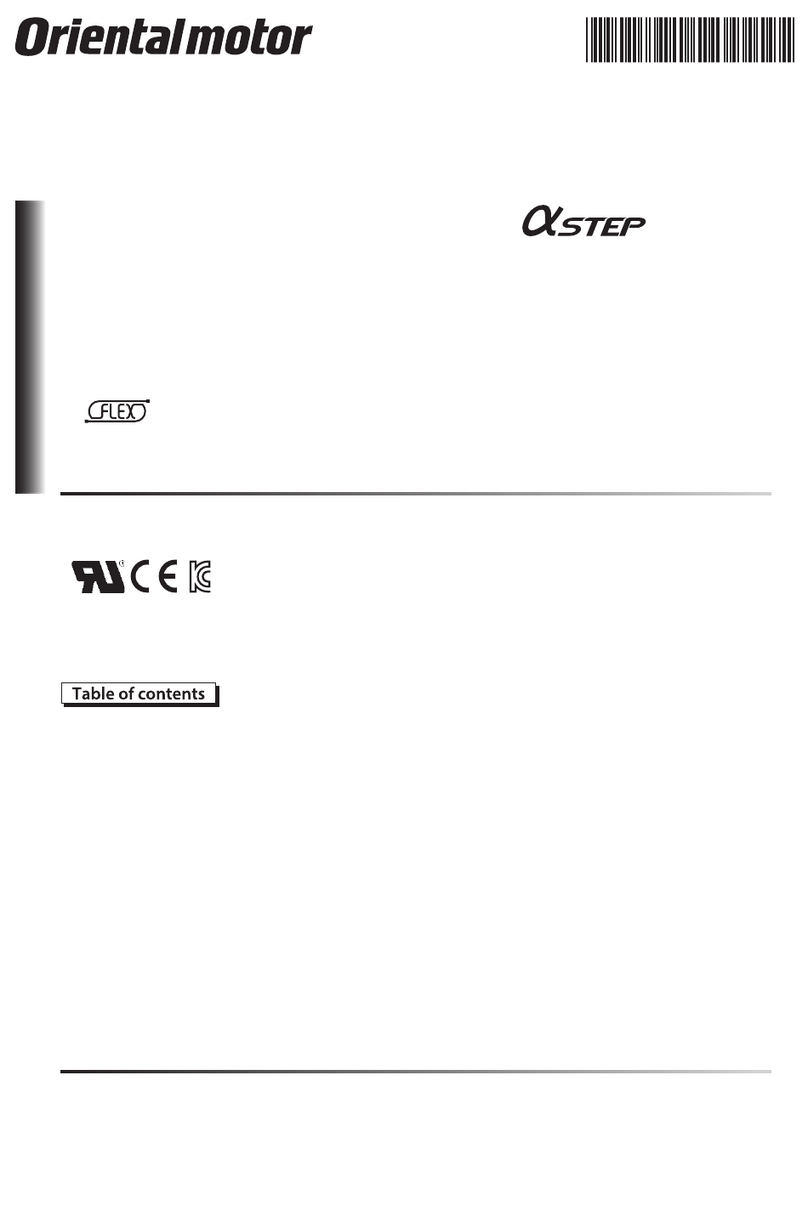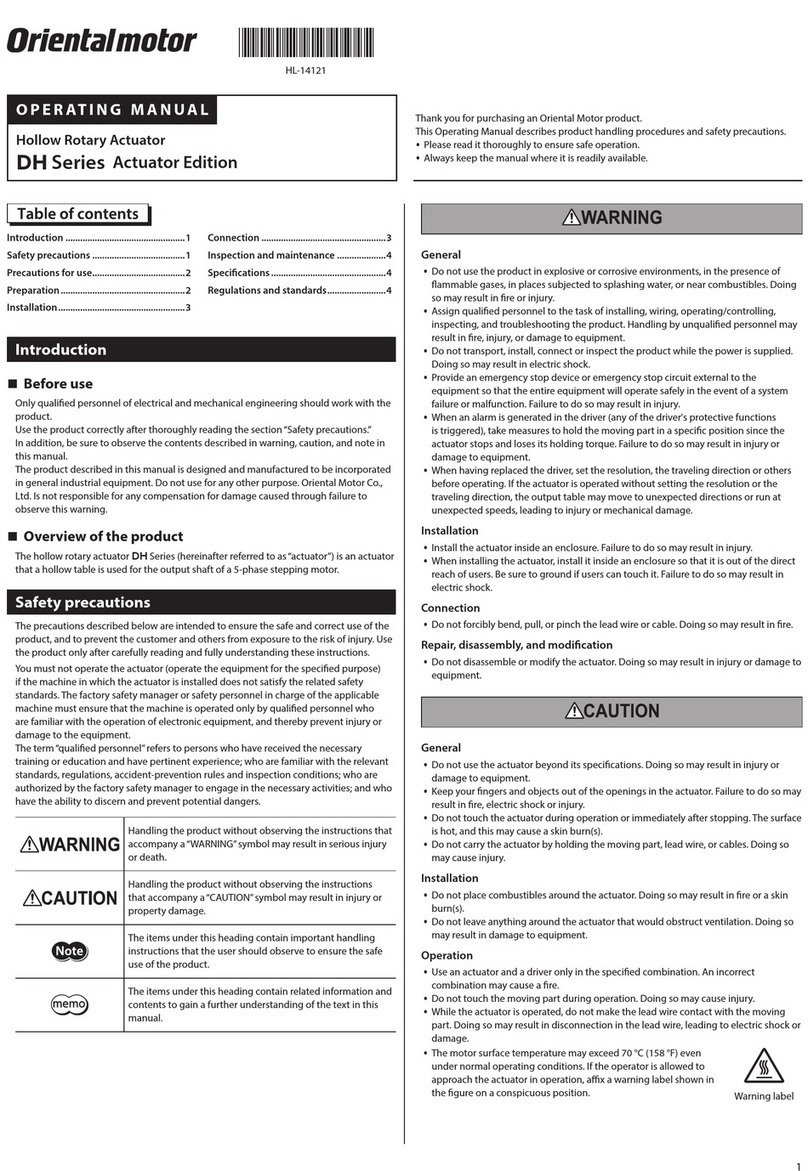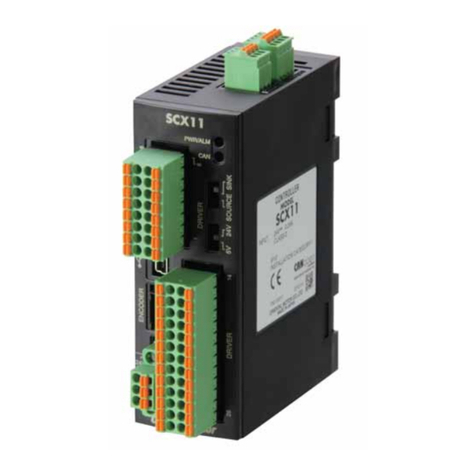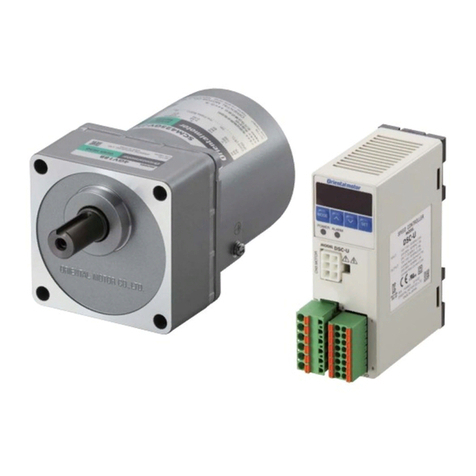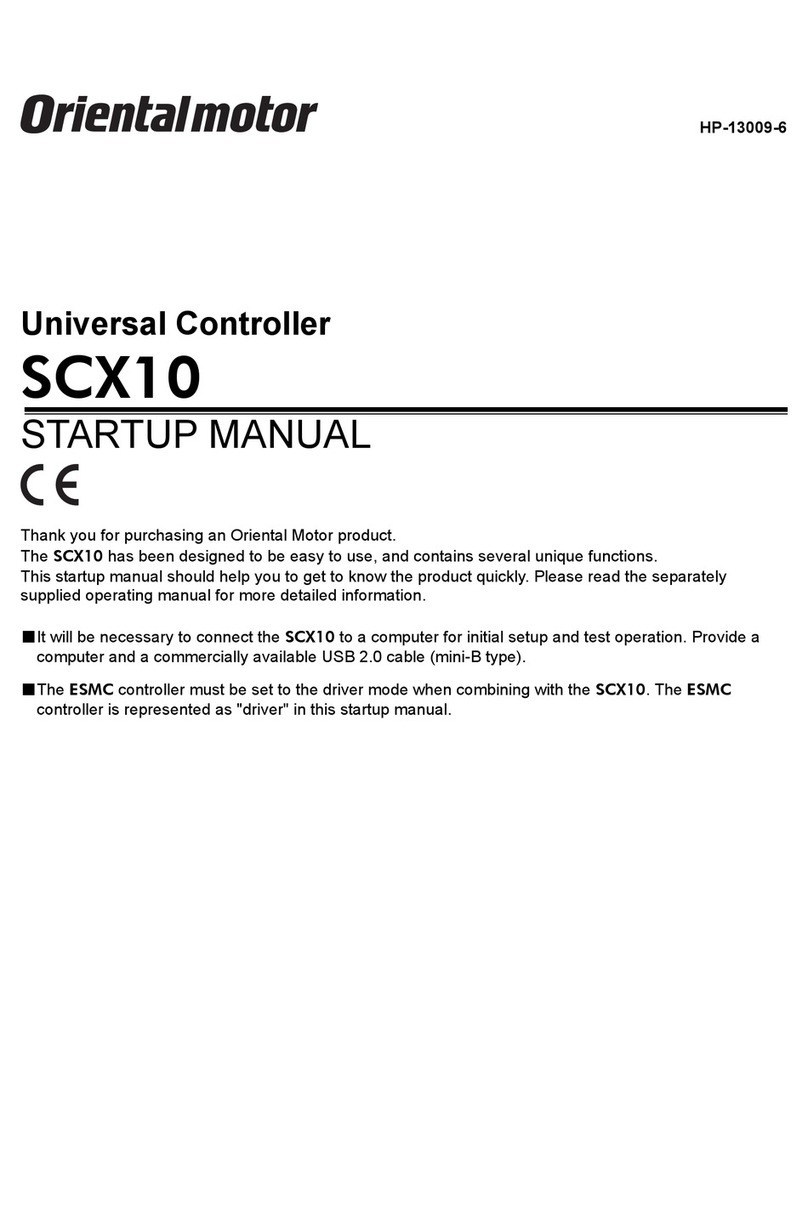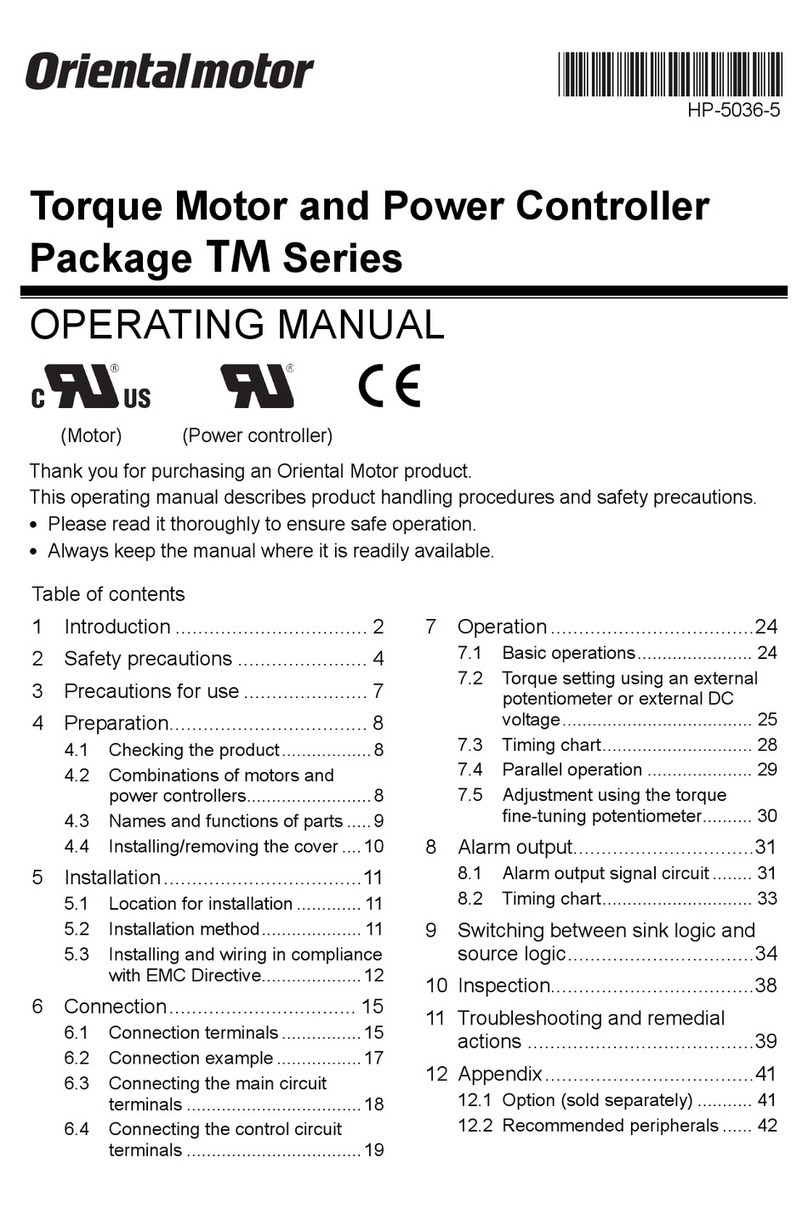
2
Repair, disassembly, and modication
yDo not disassemble or modify the cylinder. Doing so may result in injury.
Refer all such internal inspections and repairs to the Oriental Motor sales
oce from which you purchased the cylinder.
General
yDo not use the cylinder beyond its specications. Doing so may result in
injury or damage to equipment.
yDo not touch the cylinder during operation or immediately after stopping.
The surface is hot, and this may cause a skin burn(s).
Transportation
yDo not carry the cylinder by holding the ball screw, lead wire, or cable of
the cylinder. Doing so may result in injury.
Installation
yDo not place combustibles around the cylinder. Doing so may result in re
or a skin burn(s).
yDo not leave anything around the cylinder that would obstruct ventilation.
Doing so may result in damage to equipment.
yProvide a cover over the moving parts of the cylinder. Failure to do so may
result in injury.
Operation
yDo not touch the ball screw during operating. Doing so may result in injury.
yThe motor surface temperature may exceed 70 °C (158 °F)
even under normal operating conditions. If the operator
is allowed to approach the cylinder in operation, ax
a warning label shown in the gure on a conspicuous
position. Failure to do so may result in a skin burn(s).
Warning label
Precautions for use
This section covers restrictions and requirements the user should consider
when using the product.
•Thrust
Always operate the cylinder under a load not exceeding the thrust. Operating
the cylinder under a load beyond the thrust or allowing the ball screw to
remain locked may cause damage to the bearings (ball bearings) of the motor.
When using the cylinder in elevating applications, operate it under a load not
applying an external force and not exceeding the maximum transportable
mass in vertical direction.
•Permissible moment
Always operate the cylinder under a moment within the permissible value.
Continuing to operate the cylinder under a moment exceeding the
permissible value may cause malfunction or shorter service life of the cylinder.
•Do not hit the ball screw against an object to stop.
Hitting the operating ball screw against
an object to stop may cause damage
to the cylinder due to an impact. When
operating the cylinders, always provide
a stroke-end detection sensor or limit
sensor in order to prevent the ball screw
from hitting the stroke end or load. If it
is hit to stop, remove a load and return
the ball screw at the recommended
starting speed.
Installation example of limit sensor
T
he gure shows the non-guide type
ylinder.
C
Sensor
Model Lead (mm ) Recommended starting speed (mm/s)
DRLM20, DRLM28 1 0.2
DRLM42 2 0.4
8 1.6
DRLM60 4 0.8
•Do not move the position of the stopper.
The stopper is used to prevent the ball screw from retracting completely into
the motor. Moving the position of the stopper may cause damage to the ball
screw, resulting in cylinder malfunction or damage.
•Do not remove the joint from the ball screw.
Removing the joint causes the installation accuracy of the ball screw to
decrease, resulting in malfunction.
•Take measures to keep the moving part in position if the cylinder
is used in vertical drive such as elevating equipment.
The cylinder loses its holding force upon the occurrence of a power failure
or when the A.W.OFF (all windings o) input is turned ON. Take measures to
keep the moving part in position if the cylinder is used in vertical drive such
as elevating equipment.
•Motor surface temperature
Use the cylinder in conditions where the motor surface temperature dose not
exceed 90 °C (194 °F).
If the motor surface temperature exceeds 90 °C (194 °F) due to operating
conditions (ambient temperature, operating speed, operating duty, etc.), a
damaged motor coil or shorter service life of the bearing (ball bearing) may
result.
•Grease on ball screw
Grease on the ball screw may darken slightly within a short time after the
start of operation. This is not a problem if there is no abnormal noise (i.e., from
deection or interference). Wipe o the dirty grease with a soft cloth, and
apply new grease.
When grease on the ball screw has darkened after the initial operation,
the installation accuracy may be decreased. Refer to p.9 and check the
installation accuracy of the ball screw. When grease was darkened, refer to
p.14 and apply new grease.
•When conducting the insulation resistance measurement or
the dielectric strength test, be sure to separate the connection
between the cylinder and the driver.
Conducting the insulation resistance measurement or dielectric strength test
with the cylinder and driver connected may result in damage to the product.
•Non-guide type cylinder
Provide an anti-spin mechanism for the ball screw
The non-guide type cylinders cannot be operated without an anti-spin
mechanism for the ball screw because the ball screw rotates idly. Always
provide an anti-spin mechanism externally to the cylinder. In addition, make
sure the load installed to the ball screw is supported with a linear guide, etc.
Load to the ball screw
Applying a moment load to the ball screw may cause deterioration of the
ball screw. Support a load with a linear guide etc. and install the load in the
specied installation accuracy so that a moment load does not apply to the
ball screw. Refer to p.9 for the installation accuracy.
Installation accuracy
When using the non-guide type cylinders, always install within the specied
installation accuracy. Low accuracy of installation may result in a malfunction
or shorter service life of the cylinder. Refer to p.9 for the installation
accuracy.
When a carrier guide for load is provided
When a carrier guide for load is provided, always use the non-guide type
cylinders. (Do not use the guide type or table type cylinders.)
•Guide type cylinder, table type cylinder
The guide type and table type cylinders can receive a moment using the load
mounting holes in the joint. Use the cylinders under a moment within the
permissible value.
